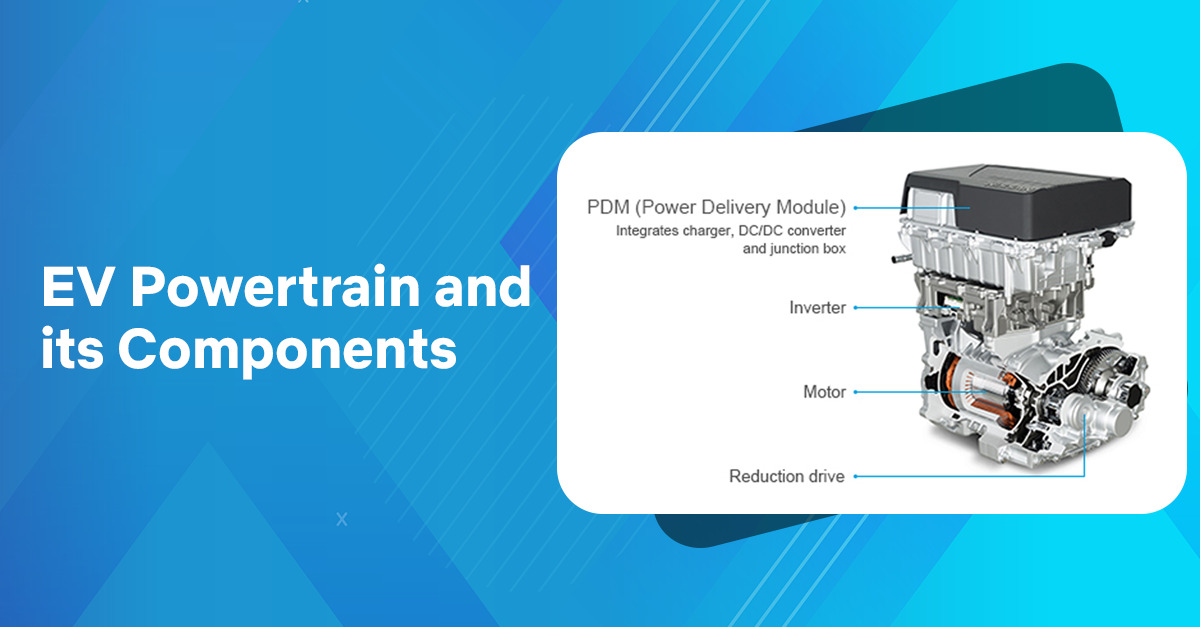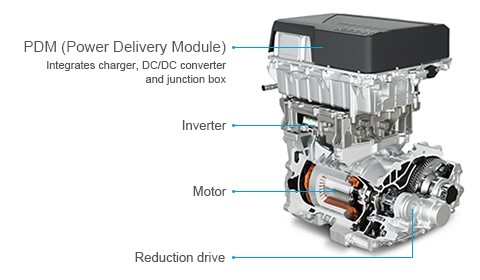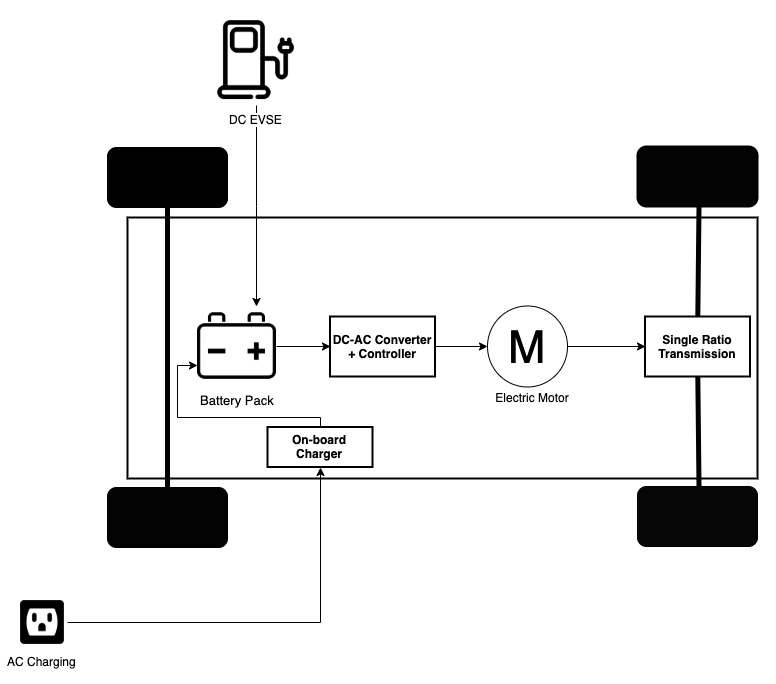

A powertrain is a vital part of any vehicle that must be well-designed and carefully manufactured to function properly. The engine, transmission, and driveline are all kinetic components that work together to propel the car along the road, making up the powertrain. It is what allows a car, truck, or another vehicle to generate movement and propel itself forward. So when it comes to what powers transportation in modern society, there is simply no denying that the powertrain is truly the driving force behind it all.

An E-Powertrain is a high-efficiency, ultra-quiet, lightweight, and small powertrain for electric vehicles (EVs) that produces instant torque. These factors work together to produce a high-quality, fluid, and highly responsive drive. EVs powered by e-Powertrains eliminate the need for an internal combustion engine. A vehicle runs thanks to the powertrain system's primary goal of generating energy from a power source through a conversion device and delivering it to the wheel.
The powertrain of an electric vehicle is completed by one of five key components, including the electric motor, battery pack, inverter, charger, and DC-DC converter, among others. They have has been created to survive in a variety of global conditions, exhibiting great performance and high durability in each.
Battery Pack: The battery pack, which is composed of many lithium-ion cells, stores the energy required to power the car. Direct current (DC) is produced by battery packs at their output terminals. Altering the waveform of an alternating current (AC) allows for electric equipment control.
Inverter: This DC-to-AC conversion as well as the torque control capabilities is provided by the motor inverter.
DC-AC Converter: The DC supplied by the battery pack is converted to AC and fed to the electric motor by the DC-AC converter. A complex motor control system, also known as the powertrain electronic control unit, controls the frequency and magnitude of the voltage supplied to the electric motor to manage the speed and acceleration per the driver's instructions transmitted via the accelerator and brake pedals.
Electric Motor: The wheels are powered by an electric motor, which transforms electrical energy into mechanical energy. Many EVs employ motor generators that can also carry out regeneration.
On-board Charger: With the help of an on-board charger, DC is created from AC that is received through the charge port and the amount of current that flows into the battery pack is controlled.

Electronic Control Units (ECUs): An EV powertrain consists of a variety of hardware and software parts in addition to the aforementioned core parts. ECUs, such as the Powertrain ECU mentioned above, are essentially software programmes connected with the powertrain components to aid in data processing and interchange. In an EV, a number of tiny ECUs carry out distinct tasks. The CAN protocol is frequently used for inter-ECU communication in vehicles. Additional examples of core ECUs include:

Recent trends make it evident that the need for and utilization of Engine Vehicle Powertrain will increase.Electric vehicle architectures with various specialties are entering the market, and many more are being proposed and investigated. There will be a variety of designs with a smooth transition in the architecture and an amazing solution to produce a reasonable EV architecture in the approaching years. As a seamless integration of numerous upcoming technologies, EV architecture needs special consideration during the design and needs to be tested and validated in various scenarios.
Ghaziabad Precision Products was established with the goal of creating an engineering conglomerate that specialized in diesel engine valve train component solutions. It produces 12 million pushrods annually in three facilities with expertise in solid forged, solid welded, projection welded, and press fit kinds.The company's product line has grown over time to include rocker arms, shafts, and assemblies in addition to pushrods.GPP is moving forward toward a bright future and becoming one of the world's preferred suppliers of valve train components with well-defined short-term plans and long-term growth strategies.The four cornerstones of GPP are quality, price, delivery, and services.